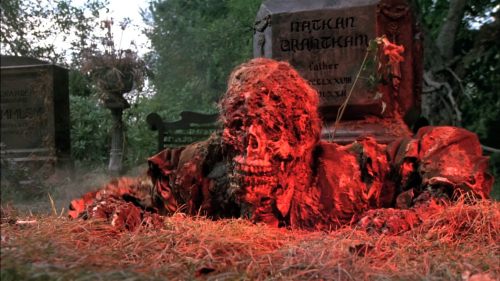George A. Romero 1940 - 2017
George A. Romero has died after a “brief but aggressive battle with lung cancer” at age 77, according to the Los Angeles Times.
As part of a Pittsburgh commercial house called The Latent Image in the 1960s, Romero and his cohorts made TV spots, industrial films, whatever anyone was paying them to do. In 1968 they pooled their skills and resources and made Night of the Living Dead - nothing less than the horror film equivalent of the birth of punk rock. It spawned the modern zombie film, broke many rules, made a bunch of money (though not for its creators) and started Romero on a horror career which saw him returning time and again (and at the end, sadly, exclusively) to the genre he created.
This is not a Wikipedia entry; we’re not going to list every film the director made or didn’t make. But I think it’s important to say here that George A. Romero was a movie fan. If you were lucky enough to meet him you might have heard him say that the films which made him want to become a filmmaker were The Tales of Hoffman and The Red Shoes. He might have told you that he wished he could’ve made a Tarzan movie. He might have mentioned that his own personal hell was moving to Hollywood in the 1990s and being paid more to develop projects that never happened than he was ever paid to actually make all his other films put together.
Romero loved movies and moviemaking, and you felt it in his films. As an ‘80s teen gorehound looking for something to push me past my comfort zone, I was drawn to Romero’s movies, which were infamously unrated due to their Tom Savini-engineered violence and splatter. But what those VHS rentals revealed to me was a level of filmmaking craft that stood out from a lot of the Z-grade trash promising from the shelves to corrupt my mind and soul. Romero edited his first seven movies himself, and his style of cutting (many shots lasting no longer than three seconds) was not only low-key revolutionary for the time, but it was a doorway - for this viewer, at any rate - into a larger appreciation of the craft of filmmaking. Lots of low-budget horror films knew what they wanted to do; on even his lowest budget film, it was always clear Romero knew what he was doing. "I'd rather have a hundred lousy shots than three great shots," he once said while explaining the value he placed on editing and montage theory. Romero could make a bare-bones news set or a sparsely populated rural field feel like the apocalypse was happening there, simply through judicious editing. I've never forgotten that blue-collar, pragmatic approach to creative work.
Romero's films stood out in another important way: they usually had something to say. Night of the Living Dead gets a lot of credit for featuring a black man as its protagonist, but Romero would be the first to tell you that was a coincidence, that they they simply hired “the best actor they knew.” Nevertheless, when that casting got the film no small amount of attention, it might've encouraged Romero to lean into progressive themes and social commentary on his future films. It's interesting to note that today, when diversity and representation are serious concerns in film, that Romero's Dead trilogy featured protagonists that were exclusively women and black men, both rare for the time.
But Romero’s entire run during the ‘70s and early ‘80s was something unique indeed. He was creating regional outsider art during a time when one could get a producer to pay for it, and an exhibitor to show it somewhere. The ‘70s exploitation scene was a free-for-all, and of course money guys wanted to be able to tout their wares as “from the director of Night of the Living Dead.” This is how Romero's proto-Feminist witchcraft oddity Jack’s Wife (aka Season of the Witch) was made. This is the climate that allowed Martin, Romero’s blue-collar anti-religion masterpiece, to happen. And this (with the help of Dawn of the Dead’s success) is how Romero was able to will his autobiographical, Arthurian triumph Knightriders into being.
Romero capped his “golden age” with Creepshow and Day of the Dead, a film that was troublesome for him at the time but which he later came to regard as his favorite of the (then) trilogy. That attitude is emblematic of the man himself: he seized his opportunities - even if they were less than ideal - and executed them like a pro. And though there were regrets and missed chances along the way, he always seemed to look back through those giant eyeglasses with a pragmatic perspective, willing to accept the narrative as it was instead of what he wanted it to be. After a long period of relative inactivity for the director, the zombie genre returned and exploded, much of it playing so closely by Romero’s rulebook that an argument could be made that royalties were owed to the veteran writer/director. Romero might have vocally recognized that he’d created the whole thing, but he didn’t get bitter about it. He just tried to get the next movie going. At 77, he was still just trying to get the next movie going. We should all have that much fight in us.
Romero didn’t just create a horror subgenre. He birthed a culture of creators. Everyone from Edgar Wright to your pal who’s Kickstarting a horror movie were or are, at one point or another, chasing the dream that Romero lived. The story of those guys and gals from the ‘Burgh who all chipped in to “make a little horror picture” is the dream-engine that drives a large percentage of the low-budget horror industry today.
Don’t tell any of them - George would never want them to stop dreaming - but George A. Romero could not have happened in any other time period but the one in which he did. He was a miracle.


